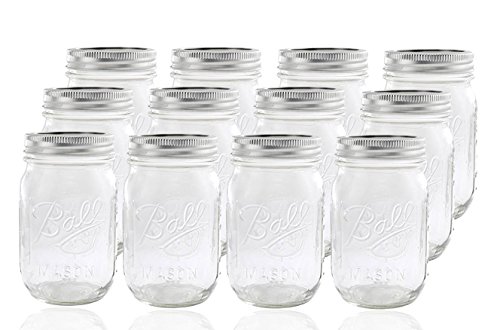I work with elementary-aged, at risk kids at a non-profit organization. We have a six-week day camp that costs them $25 per kid (total, not per day...), so you can imagine how creative we have to be to stretch the budget to make a memorable and amazing summer at the same time. When looking at the lists of "things to do in Lafayette" I am sometimes astounded at the prices. So here is a list of really cheap (or free) and fun things to do and places to go with a group (or a few) kids in Lafayette or within reasonable driving distance- just in time for summer planning fun! This list is great for groups, but also for moms who want to keep their kids engaged throughout the summer without breaking the bank.
They are numbered only because I like numbers- there is no special order.
For One or More Kids- This section is for all the moms out there!
1.
Lafayette Science Museum and Planetarium- Lafayette
Our group rate came out to $1 per person. Can't. Beat. That. Most of the time the kids tire quickly of a museum, but we could have easily spent over two hours there. They have great interactive exhibits upstairs that the kids will love as well as a planetarium show.
2.
Louisiana Old State Capitol- Baton Rouge
The Old State Capitol is free to tour and looks like a castle. My kids wanted to know when we would meet Cinderella :) It is a beautiful place to look around and they have a Louisiana history museum inside as well as a video, etc. There is also a beautiful lawn to eat a picnic lunch under the oak trees! The building is beautiful and it is completely free. They have a 3-D video experience available about the history of the building for $3 per ticket that I highly recommend. This is not your boring history film- be ready for a few fun surprises!
3.
U.S.S. Kidd- Baton Rouge
Of you have a group of 20 or more the cost is only $4 per person to tour this battleship. However, right now they have the first Sunday of every month themed and the entrance is free! The kids LOVED it! It is like a huge metal playground. They crawled all over everything and couldn't possibly break anything even if they tried. The moveable metal turret guns were a favorite. We could have spent all day there, except there is no air conditioning, so go early before it gets hot. Metal ship + high temperatures = miserably baking. They also have a museum inside (with air conditioning) that is a must see so you can cool off on your way out.
4.
Nature Station- Lafayette
All 4th graders take a field trip here, so make sure you take your kids before they hit 4th grade, that way the repeat trip will be on someone else's watch :) I have actually never been since I don't want to duplicate a trip for our older kids, but I have heard good things! They have hiking trails, presentations for groups, a kayak launch, etc. If your child is really into nature, they also have a young naturalists club.
5.
Lafayette City Parks- Lafayette
Swimming! If you aren't a part of a gym that has a pool, then the city pools post their schedules at the end of May, and it only costs $1 per visit. Earl J. Chris in an indoor pool for rainy days and Girard Park is usually empty (plus they have a pond where you can feed the dicks, a great playground, and frisbee golf course). Different pools are open on different days and times, so be sure to check the schedule with the city.
6.
Ira Nelson Horticultural Center and Gardens- Lafayette
Most people have never heard of this place and pass by it every day! You can tour the greenhouse and gardens used by UL students to do plant and agricultural research for free. I'm not sure how big of a group you need to tour, but we didn't even take the tour and had a blast. We had our kids do a scavenger hunt to find certain flowers, vegetables, and other things in nature, and spent the whole afternoon exploring. They also have a childrens garden with themed beds and trivia questions for the kids to interact with.
7.
Lake Martin and Cypress Island- Breaux Bridge
This is another great place for a scavenger hunt. They have a drive through the swamp where you can see alligators along the edge of the road (sometimes even in the road!) If you go in the spring you can see all of the birds nesting, which is pretty amazing. They also have a wooden plank walking tail over the swamp water so you can see the cypress tress, turtles, and egrets close up. They also have swamp boat tours from the dock, and that is the only part that costs anything at all!
8.
Tabasco Factory Tour- Avery Island
This one is a bit of a drive, so I won't be taking my whole group anytime soon, but for a family trip it is perfect. The tour of the factory where you see how they make the pepper sauce is free as well as the gift shop, which has free samples of some crazy Tabasco products like Tabasco ice cream and Tabasco Coke. There are also some cool gardens that you can tour, but the price on that is $8 adult/ $5 child. This falls outside of our budget, but if it fits yours, it is a great way to spend the day.
9.
FoodNet- Lafayette
A great way to spend time is giving back! Food Net is a great place to take kids because they can help pack the food boxes, sort canned goods and more! Call in advance to see when they can use an extra set of hands and teach your kids about helping others while having a great time. They also now have a FoodNet community garden that they may need help at. If you want your kids to learn about growing their own food, this is a great way to do it while helping others.
10. Movie Theater- Lafayette
The Grand movie theater usually shows already released movies during the day with special rates for kids (like $3 a piece). They put their schedule out as summer gets closer, so be sure to check it out. With the price of regular tickets, this is the only way I'll see the inside of a theater!
11.
Public Library- Lafayette
Be sure to look at the public library's schedule of events. They always have TONS of free stuff going on for all age groups!
12. Local Fire Station
Bake cookies and deliver them to the fire station If you let them know in advance and there aren't any fires, you may get to see the fire truck or have an impromptu tour of the fire station.
13.
Louisiana State Museum (Baton Rouge)
This museum is amazing! It is full of awesome stuff that will amaze the kids, and best of all it is free! It has a great visual and hands on exhibits including full size steamboats, combines, and mardi gras floats.
14. Cultural Activities
South Louisiana has a ton of cultural activities- so much so that I won't even try to list them all. However, there is always a festival, parade, or local event to attend if you keep an eye out!
15.
Downtown Lafayette
I am just going to roll all of these activities up into one. Downtown Lafayette has a lot of family friendly activities include Movies in the Parc, Artwalk, and more. Some of these activities are on a regular basis and others are special events, so keep an eye on the calendar!
16. Be Creative
Take the kids to places they have never seen before. We took our kids to tour a bank once, and they were more impressed with the escalators and windows from the top of the tall building than the bank tour itself. Try going to the airport to watch planes take off and land. Pick fruit or vegetables at a local farm. Explore new areas of the city. There is always something new to see, and kids find the smallest things absolutely fascinating!
For Groups Only- Great for class or church trips
1.
Great Harvest Bread Co. Tour and Bread Making- Lafayette
Great Harvest gives an awesome lesson on how bread is made, tour of their bread making facility, and let the kids make their very own bread creations complete with chef hats! Such a great experience for the kids!
2.
Police Station Tour- Lafayette
The police station gives tours of the facility to the kids, and it can be a real eye-opener. The kids will get to see armored vehicles, drug dog training in action, drink driver testing, the police training facility and more. It is a great place to take a group for free.
3.
KLFY TV-10 News Station Tour- Lafayette
A news station tour is great for the kids! Getting to play in front of a green screen was the highlight by far, but you also get to play on the news sets, see the behind the scenes of the filming and editing process, and sometimes meet some familiar faces from the news.
4. Bank Tour
Check at different places to see is you can schedule a bank tour. Our kids loved seeing the inside of a vault and will never forget seeing over $100,000 in cash! They got to see how the drive through worked with the tubes sending money in and out, etc. This is a great follow-up trip after talking about money or finances.
I know there are LOTS more, and I'm sure I will add to this later as I remember more. What else do you love to do with kids around Lafayette, LA on a budget???












































































































